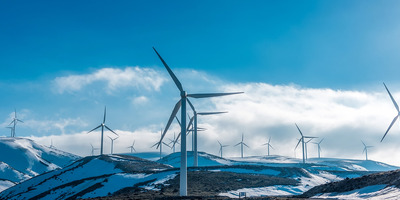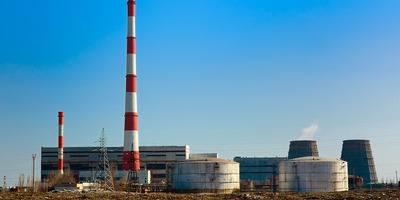Understanding and Finding best electric companies
Understanding and Finding best electric companies
Among all energy types, electrical energy is the most applicable to our lives. We are surrounded by electricity. Electricity drives everything from our bedroom lamp to our favourite gaming device to the fridge that houses all our favourite snacks. It now also drives many of our vehicles. Even if you travelled to the most remote parts of the globe, you might always find it in the clouds above you during a storm. Electricity is generated in several ways, including coal, water, wind, nuclear, hydro, and solar. However, have you ever wondered what electricity is made of or how it gets to your home? Understanding where Electrical energy comes from and how we can use it will help us better control our consumption.
Do you need to choose an energy provider? Or are you planning to switch from your current electric provider? You are in the right place. People that live in cities like Alberta have a wide range of electric company options to choose from, but how can you easily compare rates by these companies. Finding information on these companies' websites may not be a reliable option. Our review page will help you make a wise decision on the best electricity providers available and those that offer affordable rates. You can also find reviews about other energy service companies.
How do you get electricity to your house?
The sources of electricity and the sources of energy for consumers differ. Some electric companies only use their power plants to produce all the electricity they offer. Others can buy electricity directly from other utility providers, power marketers, and independent power producers through a regional transmission reliability organization's wholesale market. Aside from the minor specifics, electric energy is distributed to the customer by electric supply companies in somewhat similar ways.
The electricity delivery process
Power plants produce electricity, which is distributed to consumers through transmission and distribution lines. Substations, transformers, and power lines link electricity producers and consumers in this dynamic structure known as the "grid." The energy grid in Canada alone has thousands of miles of high-voltage power lines and millions of low-voltage power lines with transformers connecting thousands of power plants to millions of customers.
Low voltage electricity is transmitted through transformers that increase or decrease voltages to adjust to different stages of the journey from the power plant to your home or business. High voltage power lines are hung between large metal towers and can carry electricity over long distances.
What exactly is a smart meter?
The number of energy units used during the billing cycle is the difference between one month's reading and the next. Smart meters are being installed around the country to help you save money on your electricity bill. They facilitate two-way contact between you and your service provider, allowing the latter to be informed of incidents such as blackouts. It helps the utility to deliver more dependable services and can be used in combination with home energy management systems, such as web-based tools offered by the utility. They can also allow you to monitor your thermostat or switch off appliances from afar.
How does electricity work?
Closed circuits carry electricity. Before electrons can pass through it, it must have a full path. A circuit is closed when you turn on a light by flipping a switch. Of course, this implies that turning off a switch closes a circuit. Electricity travels from the electric wire to the light and then back to the wire. When you turn on your television or other appliances, you are closing a circuit that allows electricity to pass through the wires and power them.
Is it True That Unplugging Electronics Saves Energy?
Yes, depending on what you unplug. And when switched off, larger objects like computers use more "phantom energy" than other electronics. Unplugging smaller appliances, such as a blender, will save you little to no money, so it's not worth the hassle. You will reduce your energy costs by being mindful of your energy costs during the seasons and by frequent use of electronics. Examine what works best for you and your family to decide what is worth implementing on a long-term basis.
How Can I Lower My Electric Bill in the Winter?
To begin, make sure you're not allowing warm air to escape. An old window that doesn't close properly or a gap in the weather stripping on the front door may be allowing air to escape. Take a walk around your house until the winter chill sets in and caulk any possible gaps or leakage points to trap the warm air inside. Second, think about having a smart thermostat. With a thermostat, you can monitor the temperature of your home remotely during the day and even heat only specific rooms. If you only have one thermostat, open vents in rooms you want to keep warm and close vents in rooms you don't want to heat if you only have one.
How Much Power Does a Television Consume?
Depending on the size of the unit and the equipment used, most TVs use between 120 and 170 watts. A 42-inch LCD, for example, consumes 120 watts, while a 50-inch LCD consumes 150 watts. When the technology is changed, 42-inch plasma TV needs 220 watts to operate, while a 50-inch plasma requires 300 watts.
How Much Power Does a Computer Consume?
A desktop computer's energy consumption varies from around 200 watts to about 400 watts, depending on the type of system you use.
How Much Electricity Does a Light Bulb Consume?
You can figure out how much electricity a light bulb uses by looking at the watts mentioned on its packaging. Some bulbs are 100 watts and bulbs that are 60 watts available. Furthermore, when an LED light bulb consumes 18 watts, fluorescent tubes consume 36 watts.
How Much Electricity Does an Oven Consume?
Ovens come in a variety of shapes and sizes, with some built for commercial kitchens and others for home use. Furthermore, the dishes you prepare need different cooking temperatures and times. Ovens typically use 1,000-5,000 watts, with the average being about 2,400 watts per hour – if the cooking temperature remains between 300- and 425-degrees Fahrenheit.
What Is the Energy Consumption of an Air Conditioner (AC)?
Air conditioners, like ovens, come in several configurations. The number of rooms in your home or apartment, the ideal indoor temperature, your insulation, and so on all influence the total amount of electricity used. To give you an idea, during the hotter months of the year, a typical central air-conditioning unit consumes between 3,000 and 5,000 watts of electricity.
Conclusion
There is so much more to uncover about this topic. However, Good knowledge of the basics about the electricity system and reliable reviews from customers about the best electric companies will help you in choosing the right electric provider.
By
Mo
More Energy

Steps Every Small Business Should Take To Save Money on Energy Bills
Saving money on your energy bills is important for any business, no matter how big or small. This blog post will discuss some tips that every small business can take to help reduce their expenses. Implementing even a few of these suggestions can result in significant savings over time.

All you need to know about energy service companies
Energy Service Companies are becoming more popular, but many people are still unaware of what they offer. Make no assumption: Read everything you need

Things to know before choosing green energy stocks
There are several reasons to be enthusiastic about advancements by green energy companies: See what green energy stocks are and how to choose

All you need to know about Oil and Gas Companies
Gas Companies are still very much relevant in our world today. In this article, you find all you need to know about these companies and how to choose